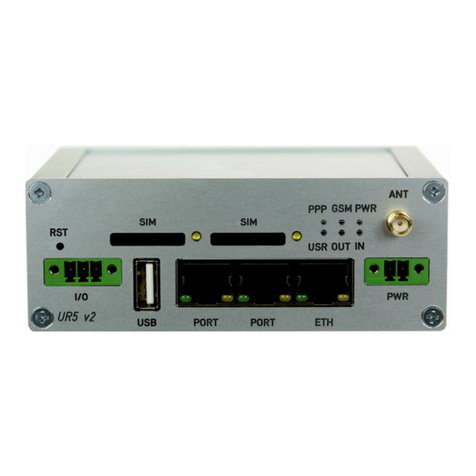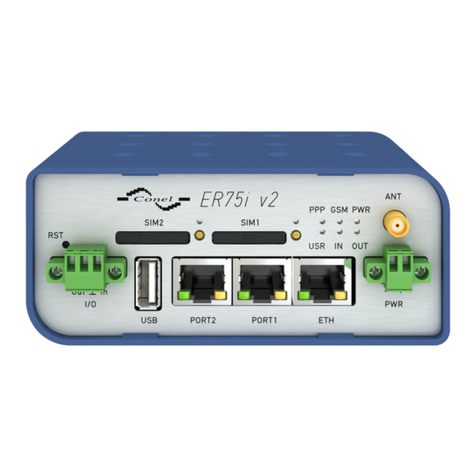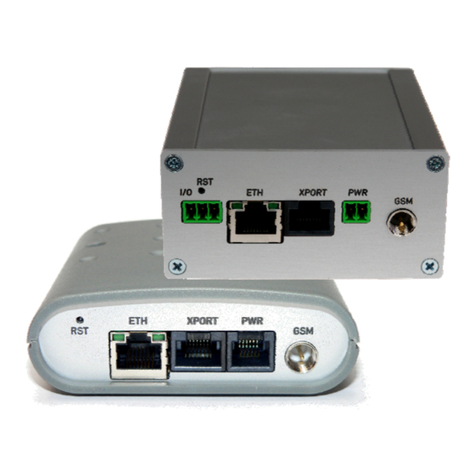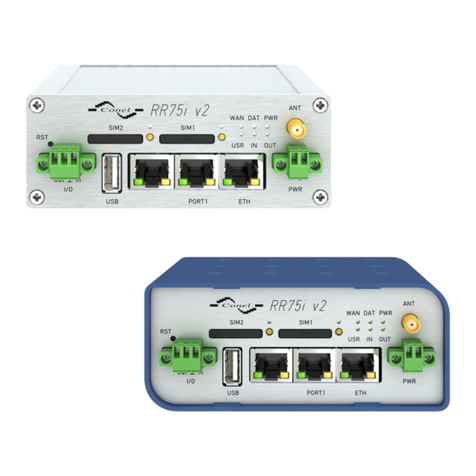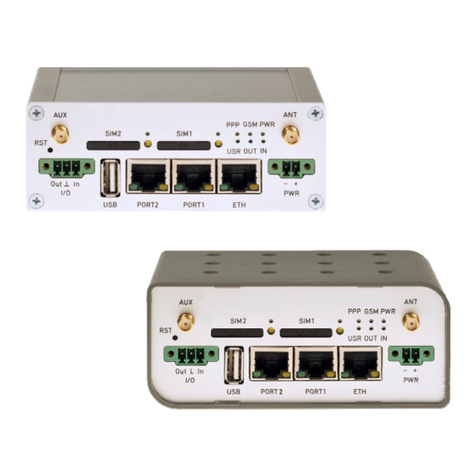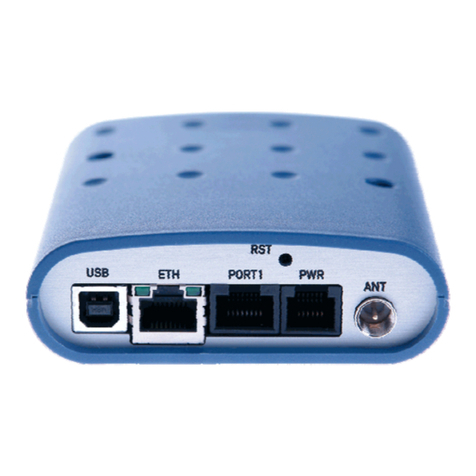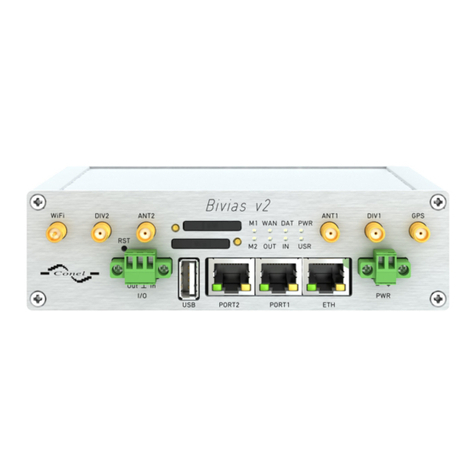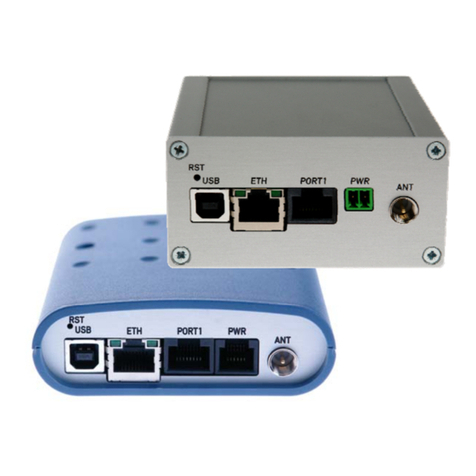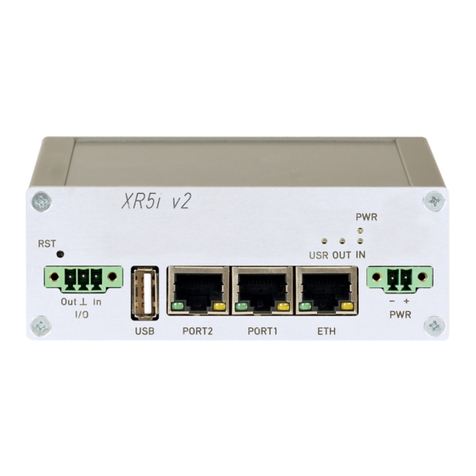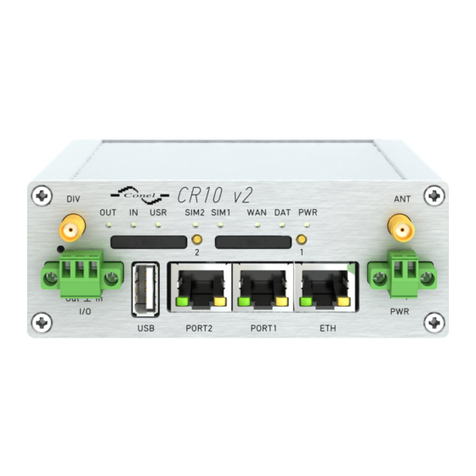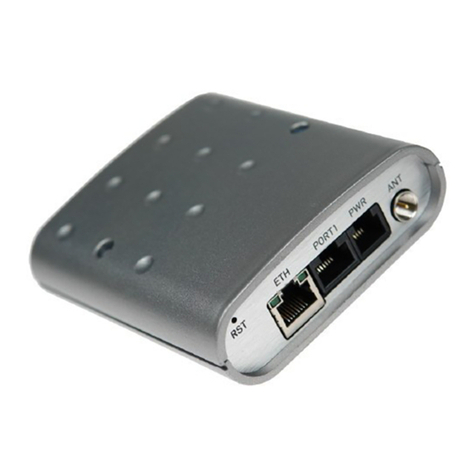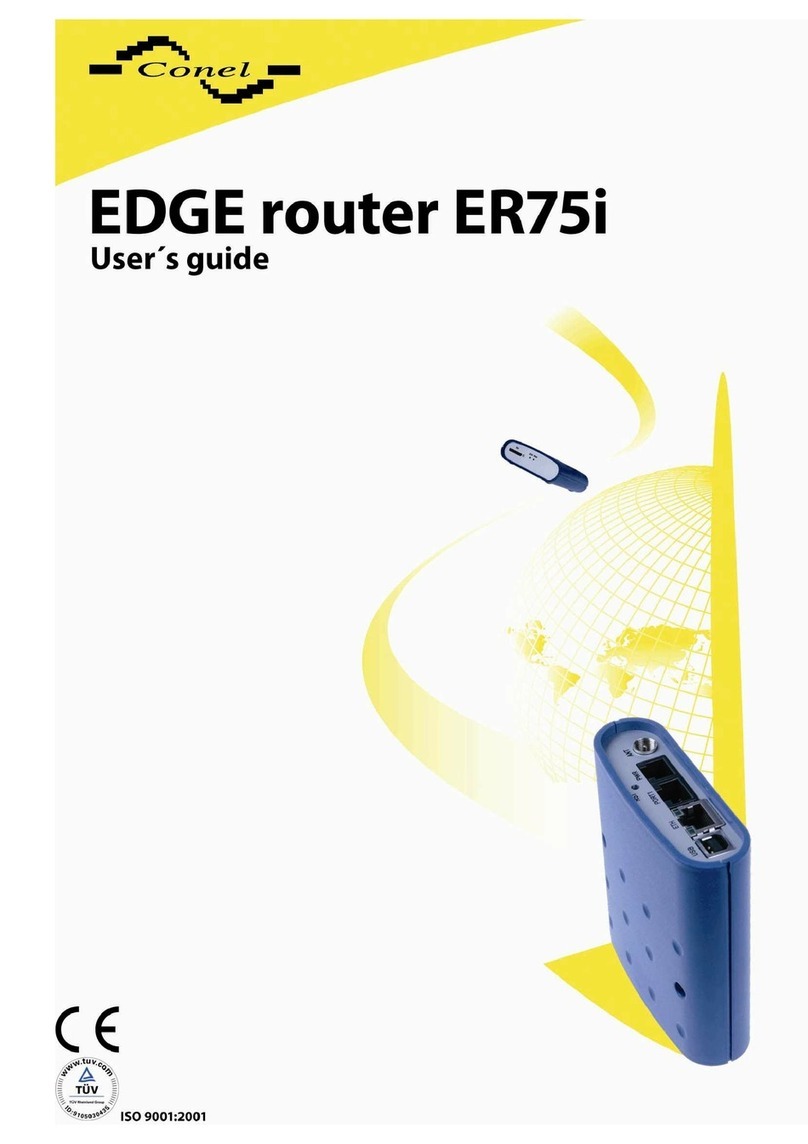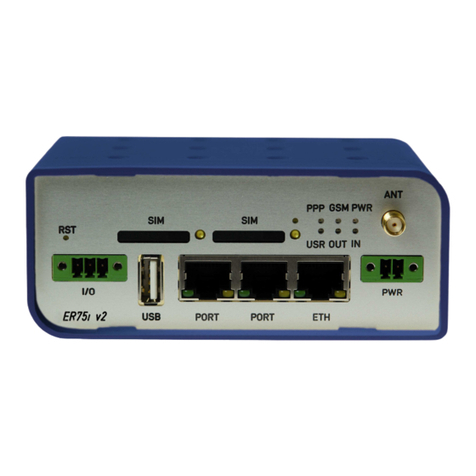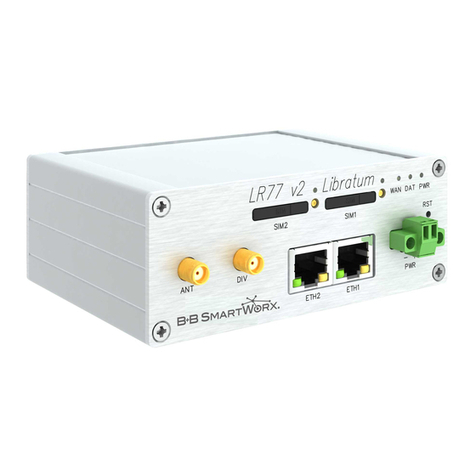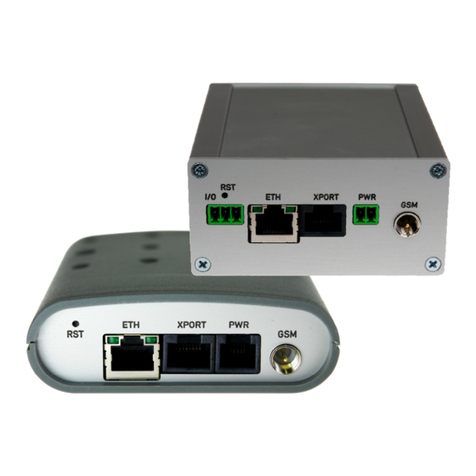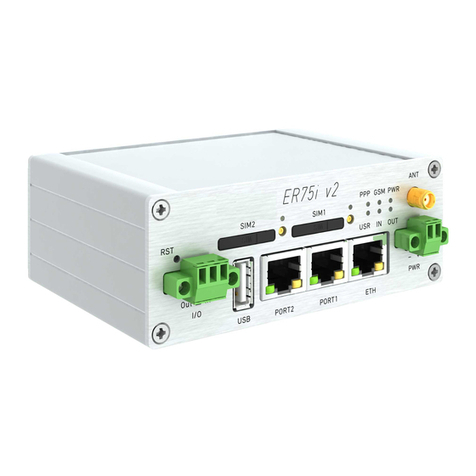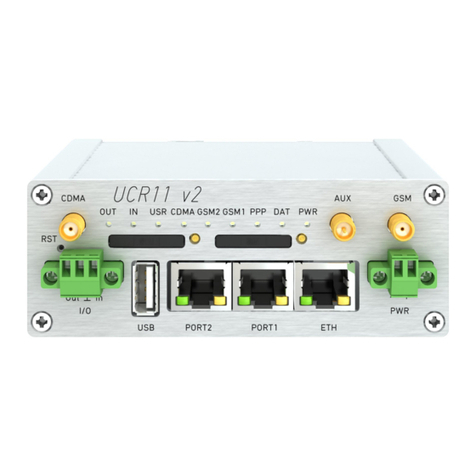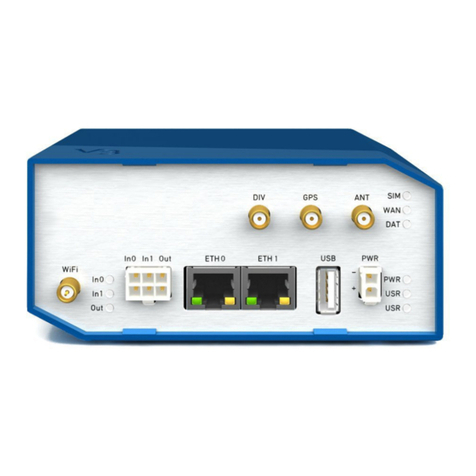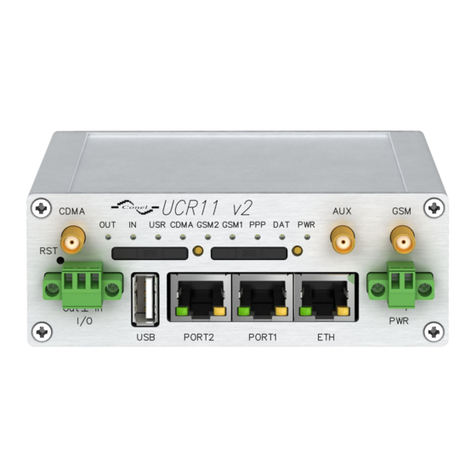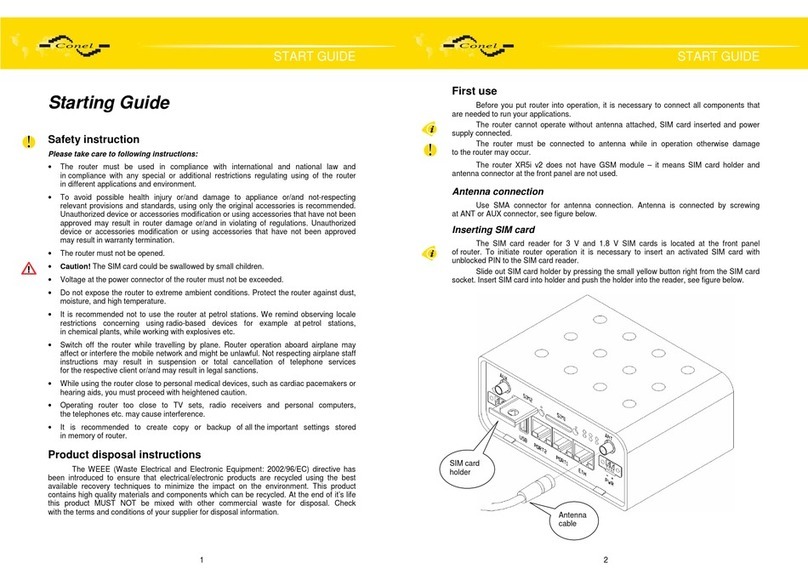3. ROUTER DESCRIPTION
3. Router description
Conel router Bivias v2 is equipped with two independent communication modules for wire-
less connectivity of various equipments and devices via Ethernet interface 10/100 to the inter-
net or intranet. Each module can and should use the infrastructure of another cellular service
provider. This router allows customer to combine modules for different mobile technologies
– LTE or HSPA+ technology on the first module position and LTE, HSPA+ or CDMA technol-
ogy on the second position. Due to high download and upload speed is this device an ideal
wireless solution for traffic and security camera systems, individual computers, LAN networks,
automatic teller machines (ATM) and other self-service terminals and machines.
As a standard, Bivias v2 router is equipped with one Ethernet 10/100, one USB Host port,
one binary Input/output (I/O) port and two SIM cards. The wide range of interface options of
this router further expands an expansion ports designated as PORT1 and PORT2 which are
mounted on the customer’s request. For PORT1 is available Ethernet port 10/100. PORT2
may be equipped with WIFI wireless interface. Both of ports can be fitted with internal switch
(exp. port SWITCH). This wireless router is supplied in a metal casing.
Configuration is done via web interface protected by password. The router supports cre-
ation of VPN tunnels using technologies IPsec, OpenVPN, L2TP to ensure safe communica-
tion. Web interface provides detail statistics about the router activities, signal strength, detailed
log, etc. Cellular router supports functions: DHCP, NAT, NAT-T, DynDNS, NTP, VRRP, control
by SMS and many other functions.
Other diagnostic functions ensuring continuous communication include automatic inspec-
tion of PPP connection offering an automatic restart feature – in case of connection losses, or
hardware watchdog which monitors the status of the router. With the help of a special window
(start up script window) you may insert Linux scripts for various actions. For some applications
the key option to create several different configurations for one wireless router, the so-called
profiles (maximum of 4), and the option to switch between them (for example via SMS, binary
input status, etc.) is essential. Cellular wireless routers may automatically upgrade config-
uration and firmware from server. This allows mass reconfiguration of many routers in one
time.
For easy use additional software may be used – communication VPN server Digicluster
and software for router monitoring R-SeeNet.
Examples of possible applications
•mobile office
•fleet management
•security system
•telematic
•telemetric
•remote monitoring
•vending and dispatcher machines
3
